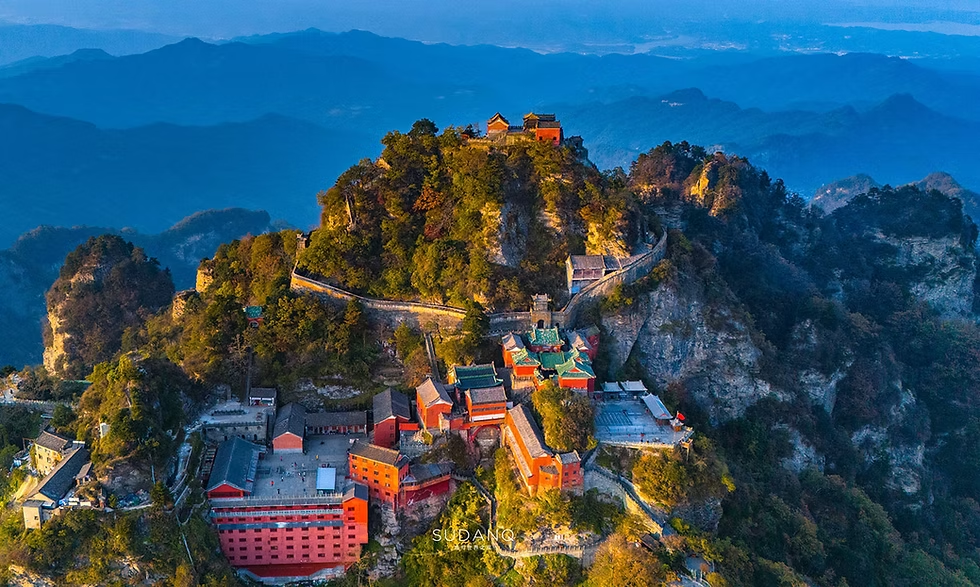A Travel Guide to Hubei
Hubei Province, located in central China along the middle reaches of the Yangtze River, is a captivating destination that blends rich history, vibrant culture, and stunning natural landscapes. Known as the “Province of a Thousand Lakes” and the cradle of Chu culture, Hubei offers travelers a diverse array of experiences, from exploring the bustling metropolis of Wuhan to marveling at the majestic Three Gorges Dam and the sacred Wudang Mountains. Whether you’re a history buff, nature lover, or foodie, this guide will help you plan an unforgettable trip to Hubei.
Why Visit Hubei?
Hubei’s central location has made it a historical and cultural hub for millennia, with roots in the ancient Chu state (1030 BCE–223 BCE). It’s home to iconic landmarks like the Yellow Crane Tower, world-renowned natural wonders like the Three Gorges, and UNESCO World Heritage sites such as Wudang Mountain. The province’s fertile plains, lush mountains, and abundant lakes create a scenic backdrop, while its culinary scene—think spicy noodles and steamed Wuchang fish—delights food enthusiasts. With excellent transportation links, including high-speed trains and an international airport, Hubei is an accessible gateway to central China’s treasures.
How to Get There
Hubei is well-connected domestically and internationally, with Wuhan as its primary gateway.
By Air: Wuhan Tianhe International Airport (WUH): The province’s main airport, offering flights to over 70 Chinese cities and 50 international destinations, including Dubai, London, Tokyo, and Bangkok. Domestic airports in Yichang, Enshi, Xiangyang, and Shiyan provide additional access. Yichang is particularly useful for Yangtze River cruise travelers, with flights to Thailand available. From North America or Europe, expect connecting flights via Beijing, Shanghai, or Guangzhou, with total travel time of 15–20 hours.
By Train: Hubei’s high-speed rail network is extensive, making bullet trains a scenic and efficient option. Key routes include: Wuhan to Beijing West: 4–6 hours Wuhan to Shanghai Hongqiao: 4–5 hours Wuhan to Guangzhou South: ~5 hours Wuhan to Yichang: 2–2.5 hours Enshi (2 hours from Chongqing) and Xianning (4 hours from Guangzhou) are also well-served by high-speed trains. Book tickets via Trip.com or China Railway’s official app (12306) in advance, especially during peak seasons.
By Bus or Car: Buses connect smaller cities and towns, with fares as low as ¥1–2 for city buses in Wuhan. Renting a car is an option, but driving in China requires a Chinese driver’s license. Consider hiring a driver for rural areas like Shennongjia.
Tip: Wuhan’s three major train stations (Wuhan, Hankou, and Wuchang) serve different routes, so double-check your departure station.
Best Time to Visit
Hubei enjoys four distinct seasons, with spring (March–May) and autumn (September–November) being the best times to visit due to mild weather (15–25°C) and vibrant scenery, such as blooming flowers or colorful foliage.
Spring: Ideal for cherry blossoms at Wuhan’s East Lake and outdoor activities in Enshi. Autumn: Perfect for hiking Wudang Mountain and cruising the Yangtze River (April–October is peak cruise season).
Summer (June–August): Hot and humid (up to 35°C), but great for water-based activities like rafting in Enshi. Winter (December–February): Cooler (0–10°C) and less crowded, though some outdoor attractions may be less vibrant.
Note: Avoid major holidays like Chinese New Year (January/February) and National Day (early October) to escape crowds and higher prices.
Major Cities
Wuhan (武汉) ★★
As a seasoned traveler, I’ve explored countless destinations, but Wuhan, the vibrant capital of Hubei Province in central China, stands out for its unique blend of history, modernity, and natural beauty. Situated at the confluence of the Yangtze and Han Rivers, Wuhan is a dynamic city that offers something for every type of adventurer—whether you’re drawn to cultural landmarks, scenic landscapes, or mouthwatering cuisine.








Must-Visit Attractions
Yellow Crane Tower (黄鹤楼) ★★★
Perched atop Snake Hill, this iconic tower is Wuhan’s most famous landmark. Rebuilt in 1981, it echoes a history dating back to 223 AD. Climb to the top for panoramic views of the sprawling city and the Yangtze River. The surrounding park, dotted with pavilions and poetic inscriptions, adds a serene touch to the visit.








Enshi Grand Canyon (恩施大峡谷) ★★★
As a seasoned traveler, I’ve explored countless destinations, but few have left me as awestruck as the Enshi Grand Canyon in Hubei Province, China. Often dubbed the “Colorado of the East,” this natural wonder offers breathtaking landscapes, thrilling adventures, and a glimpse into the rich Tujia and Miao cultures.








Three Gorges Dam (三峡大坝) ★★★
As a seasoned traveler with a passion for unique destinations, I can confidently say that the Three Gorges Dam in China is a must-visit for anyone intrigued by engineering marvels, natural beauty, and cultural depth. Located on the Yangtze River near Sandouping in Yichang, Hubei Province, this colossal structure is the world’s largest hydroelectric dam, blending modern ingenuity with the stunning landscapes of the Three Gorges region.








Wudang Mountains (武当山) ★★★
In northwest Hubei, the Wudang Mountains are a pilgrimage site for Taoists and martial arts enthusiasts. The ancient temples, like the Golden Palace perched atop the peaks, exude tranquility. Hike the trails (or take the cable car) to soak in the misty vistas and watch Tai Chi practitioners in action. It’s a 2–3 day detour from Wuhan, but worth every moment for its serene beauty.








Tenglong Cave (腾龙洞) ★★
Tenglong Cave, located just 6.8 kilometers from Lichuan City in Hubei Province, China, is a breathtaking natural wonder renowned as one of the longest karst cave systems in the world. With a total length of 59.8 kilometers and a sprawling area exceeding 2 million square meters, this cave offers a mesmerizing blend of majestic landscapes, serene beauty, and cultural experiences.








Where to Eat
Hubei’s cuisine is bold, spicy, and diverse, with Wuhan as its culinary heart:
Hot Dry Noodles (Reganmian): A Wuhan staple with sesame paste and soy sauce. Try it at Hubu Lane (¥10–15). Steamed Wuchang Fish: A delicate freshwater dish, often served at upscale restaurants like Wuhan’s Sanwu Fish Restaurant (¥80–150).
Jingwu Duck Neck: Spicy, braised duck neck, a popular street food (¥10–20). Mianwo: Fried rice buns, a breakfast favorite (¥5–10). Huan Xi Tuo: Glutinous rice dumplings, found in Jingzhou and Wuhan (¥8–15).
Dining Tips: Night markets in Wuhan (e.g., Hubu Lane, Jiqing Street) are affordable and vibrant. For upscale dining, try restaurants near East Lake or in Hankou’s commercial district.
Tips for a Great Visit
Visa: Most travelers need a Chinese visa. Check requirements at the Chinese embassy or explore visa-free transit options (10 days for US/UK/Canada citizens). Safety: Hubei is safe for foreigners, but beware of pickpockets in crowded areas like bus stations.
Language: English is limited outside major hotels and tourist sites. Download Pleco or Baidu Translate for communication. Connectivity: Use a VPN for unrestricted internet access. China Mobile or eSIMs are reliable for data.
Combine Your Trip: Pair Hubei with nearby destinations like Zhangjiajie (Hunan, reachable via Changsha) or Chongqing (6–7 hours by bullet train). Eco-Friendly Travel: Respect natural sites like Shennongjia by avoiding littering and sticking to marked trails.
Final Thoughts
Hubei is a dazzling blend of ancient history, modern vitality, and natural splendor. From the cultural riches of Wuhan to the spiritual heights of Wudang Mountain and the awe-inspiring Three Gorges, the province offers something for every traveler. Plan around spring or autumn, embrace the local cuisine, and immerse yourself in the heart of the Yangtze River’s legacy. Hubei awaits with open arms and endless wonders.
Happy travels!














Leave a Reply